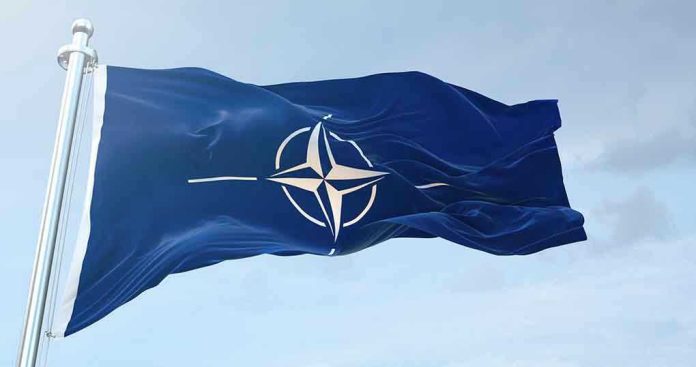
As Russian drones breach NATO airspace and military exercises intensify on Poland’s border, eastern Polish communities face a chilling reminder of what unchecked aggression and weak Western policy can unleash right on America’s allies’ doorsteps.
Story Snapshot
- Russian drones have crossed into Polish and Romanian airspace, forcing NATO fighter jet deployments and raising fears of direct conflict.
- Massive Russian-Belarusian military exercises are underway near Poland’s border, amplifying anxiety among local residents.
- Eastern Poland’s vulnerable border regions are experiencing economic and psychological strain amid escalating tensions.
- NATO allies have rushed reinforcements to Poland, but public confidence in Western deterrence remains shaky after years of globalist missteps.
Escalating Military Activity Stokes Fears in Eastern Poland
Poland’s eastern regions, long a strategic frontline in European power struggles, are gripped by mounting anxiety after a series of Russian drone incursions breached both Polish and Romanian airspace in September 2025. These unprecedented events forced NATO air defenses to scramble jets and even led to the temporary closure of Lublin Airport in Poland. Local residents, already wary from years of instability across their border with Ukraine and Belarus, now find themselves on edge as the threat of war looms closer than at any point since the Cold War. Many see these developments as a direct consequence of years of Western indecision and appeasement, underscoring why strong borders and robust national defense remain non-negotiable for America and its allies.
Adding to the alarm, the Zapad-2025 Russian-Belarusian military exercises have commenced just miles from the Polish border, drawing observers from 25 countries, including NATO states. While Belarusian officials insist these drills are purely defensive and transparent, skepticism abounds among Western security analysts and border communities. The sheer scale and timing of the exercises, following the drone incidents, suggest a deliberate show of force designed to test NATO’s resolve. For eastern Poland’s farming towns and border villages, the visible presence of foreign troops and equipment is not just a diplomatic gesture—it is a daily reminder of their vulnerability and a test of their faith in international alliances forged to guarantee their safety.
Human Impact: Economic and Social Strain on Border Communities
Eastern Poland’s borderlands, particularly the Podlaskie and Lublin regions, are feeling the brunt of these tensions. Historically underdeveloped compared to western Poland, these areas now grapple with economic disruption as military activity and security concerns dampen investment and tourism. Local businesses face declining revenue, while some families are already considering relocation to safer areas further west. Community leaders have voiced concerns about the psychological toll on residents, especially those with memories of Soviet-era oppression. The sense of uncertainty is compounded by the knowledge that, despite NATO’s guarantees, borderlands often bear the initial brunt of any escalation—a hard lesson from Europe’s turbulent twentieth century.
Government officials in Warsaw and allied capitals have moved quickly to bolster defenses, with France, Germany, Czechia, and Denmark deploying additional jets and hardware to reinforce NATO’s eastern flank. Yet local sentiment remains mixed. While many residents trust that a strong military presence deters aggression, others worry about accidental escalation or being caught in the crossfire. The Polish government has called for new EU sanctions and further NATO measures, emphasizing both the need for deterrence and the importance of clear, honest communication with affected communities. The challenge is to reassure the public without downplaying the very real risks posed by the current standoff.
Strategic Implications for NATO and U.S. Foreign Policy
The ongoing crisis on Poland’s eastern border underscores the dangers of complacency in the face of authoritarian aggression. For many conservative Americans, these events vindicate long-held warnings about the pitfalls of globalist appeasement and the need for robust, sovereign defense policies. The situation also highlights the importance of NATO’s collective security guarantees—a direct deterrent to adversaries seeking to exploit Western divisions. However, the psychological impact on local populations and the logistical strain on border economies reveal the limits of top-down assurances. As America’s leaders chart a course forward under the new administration, the lesson from Poland’s frontlines is clear: constitutional protections, strong borders, and unwavering support for allies are essential bulwarks against the chaos wrought by unchecked foreign threats.
Expert analysts warn that while a large-scale invasion remains unlikely in the near term, the risk of miscalculation or accidental escalation is real, given the proximity of military forces and the unpredictable nature of hybrid warfare. Western and Russian-aligned sources dispute the intent behind recent maneuvers, but all agree on the heightened danger faced by frontline communities. The test for NATO and its American leadership is to translate strategic commitments into tangible security for those on the ground—without falling prey to the bureaucratic inertia and “woke” distractions that have so often hampered decisive action in the past. The stakes for constitutional order, national sovereignty, and the safety of free societies could not be clearer.














